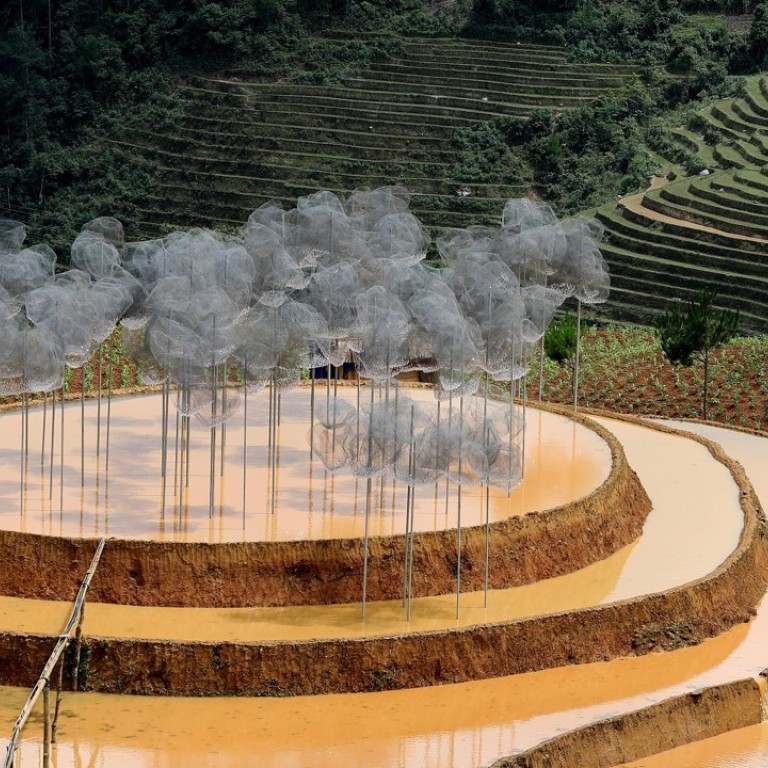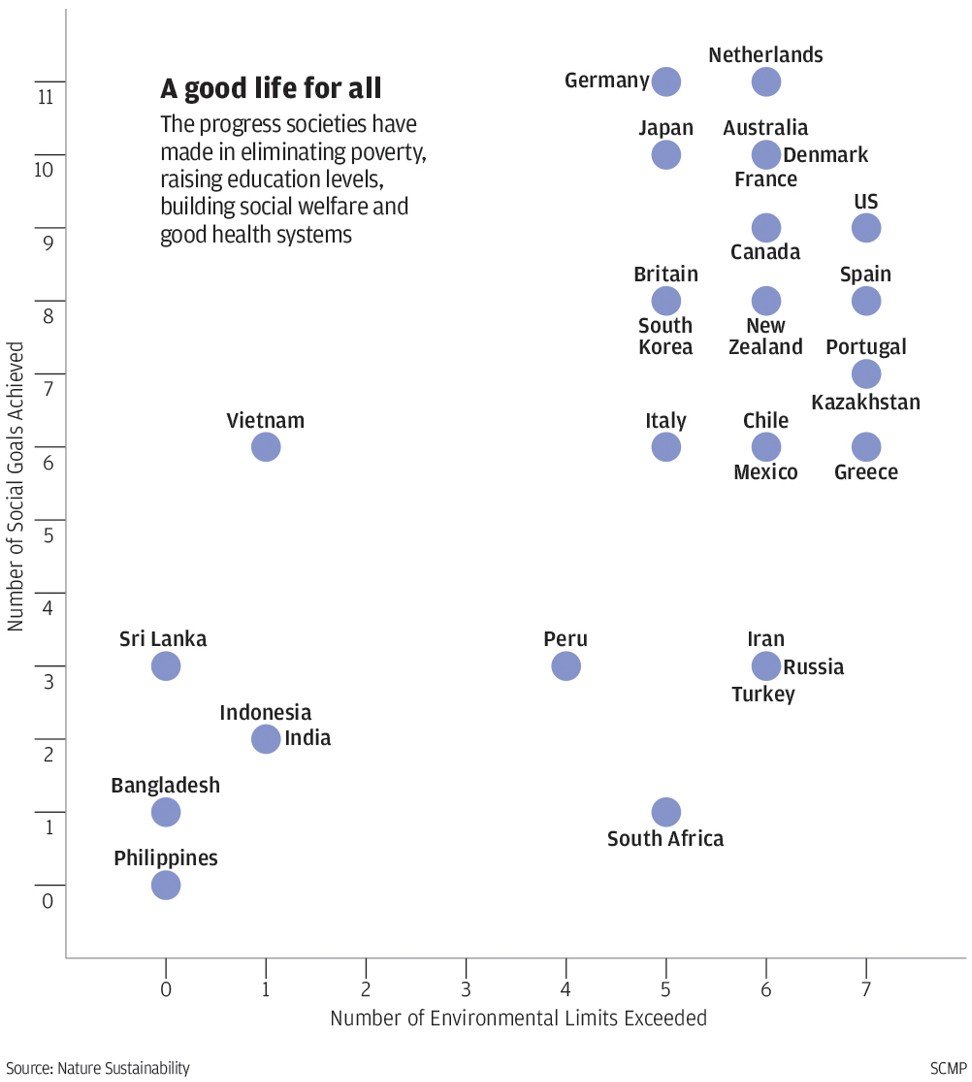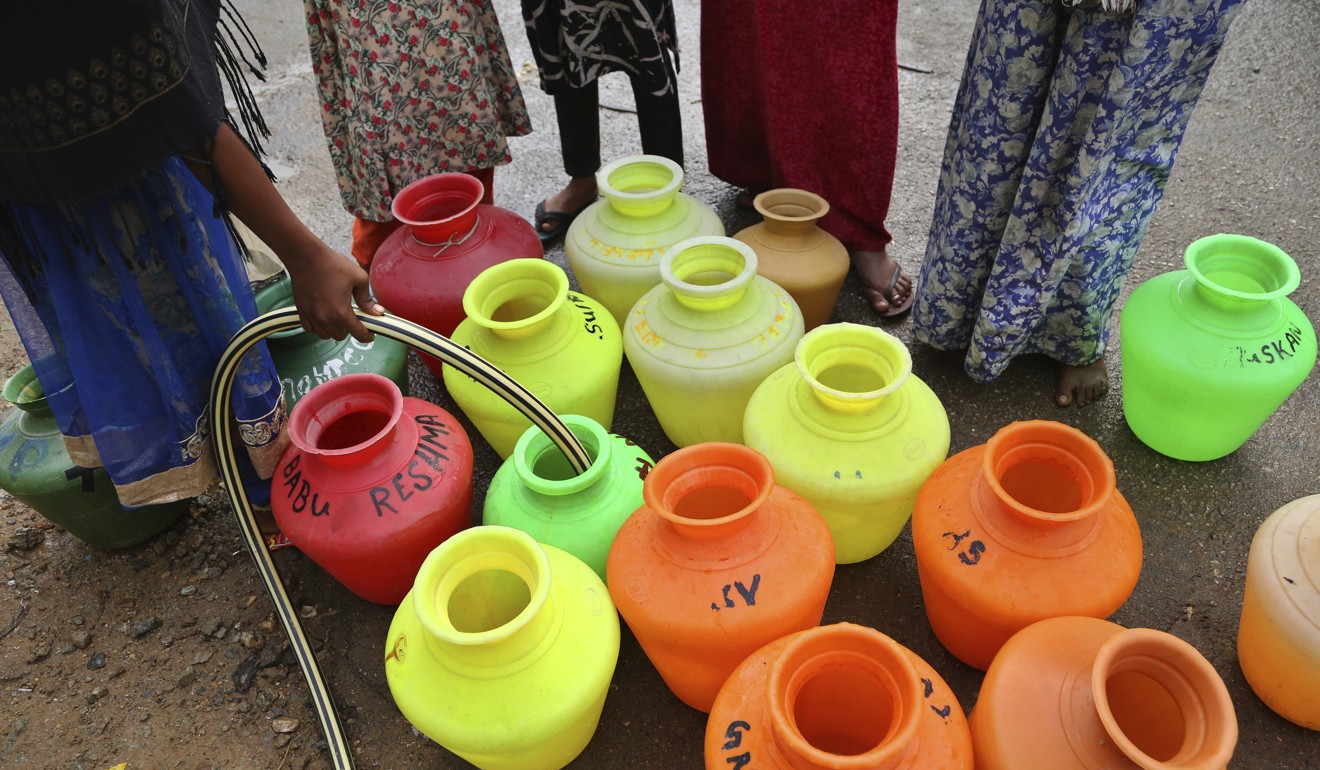
Vietnam, the unlikely poster child for a sustainable lifestyle
David Dodwell says although research links countries with high social progress to a resource-heavy lifestyle, there are exceptions. The urgent task before us is to redress the imbalance between what we want and what we can afford – by cutting down on waste for starters
It seems we are making great progress in lifting people out of poverty, giving them better education and improved health care – but only by consuming resources at a rate that punishes the planet.

From the chart, you will see a seemingly inexorable shift from the left to the unsustainable right. Even Germany only manages to stay within sustainability limits by two of the seven measures – crop and forest losses, and freshwater use.

If our future is going to be sustainable, it looks like we have to stay impoverished, or find some way of moving towards the top left hand corner of the chart.
The story the research reveals is widely recognised – except in “flat Earth” parts of the US that do not buy the facts on global resource depletion and climate harm. In a bit of a platitude, study leader O’Neill points to a solution: “Wealthy nations can consume less, with no loss in quality of life.”

Look to work by the likes of the Copenhagen-based team at the Technical University of Denmark. Their project, “The World Counts”, shows with alarming clarity the disequilibrium that is pushing the world’s resources to the brink. At current demand for resources, “we are only good for a global population of 2 billion”, the team calculates. Pity we have a world population past 7.2 billion and heading towards 11 billion.
On oil, it notes that the International Energy Agency calculates that oil provides over 40 per cent of all the energy we use, with supplies for no more than 25 more years. It also notes that 18 million acres of forest are being destroyed every year, with half of the world’s original forest cover now gone.

We read of this often, and still do little to redress the balance.
Our Western “hyperconsumptive” culture – now being enthusiastically emulated in countries like China and India as people move out of poverty – is making things worse. Read Annie Leonard’s The Story of Stuff and you will discover that the US accounts for 5 per cent of world population, but 30 per cent of resource use, and 30 per cent of waste. If US consumption patterns were applied to the world, we would need the resources of between three and five Earths.
It seems we are not just a world of compulsive consumers, but also a world of compulsive wasters. Food discarded every year in the US and the UK alone would meet the nutritional needs of 1.5 billion people, Leonard notes.
The troubling news is that we are overusing available planetary resources at a prodigious rate, putting our future gravely in jeopardy. The good news is that our wastefulness is so egregious that there is massive scope to cut back on resource use if we can muster the will.
But with the singular and unexplained exception of Vietnam, there is no present evidence that any one of us are moving up into that top left corner of the chart. It needs to start soon.
David Dodwell researches and writes about global, regional and Hong Kong challenges from a Hong Kong point of view

